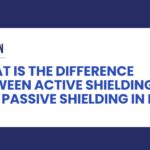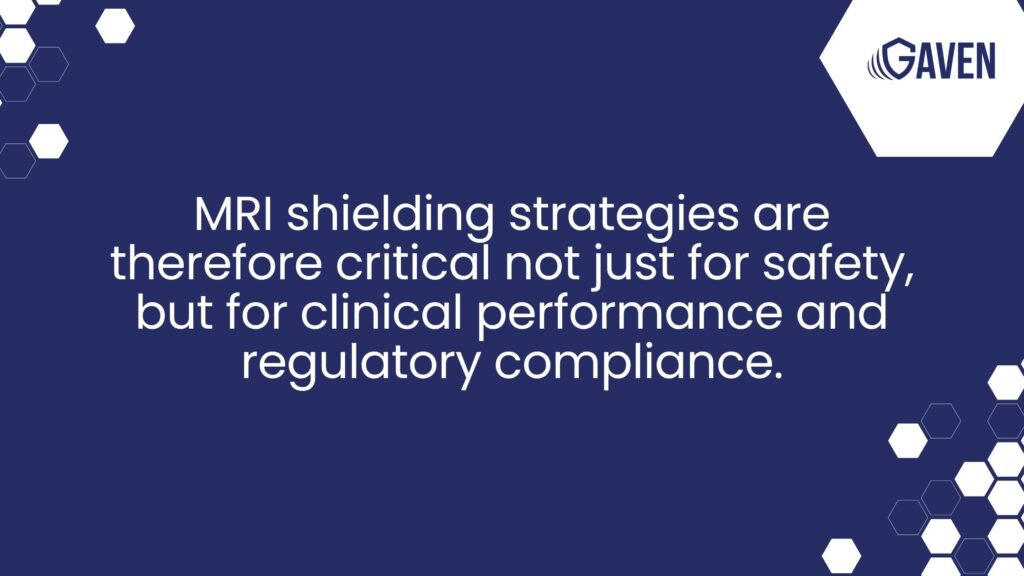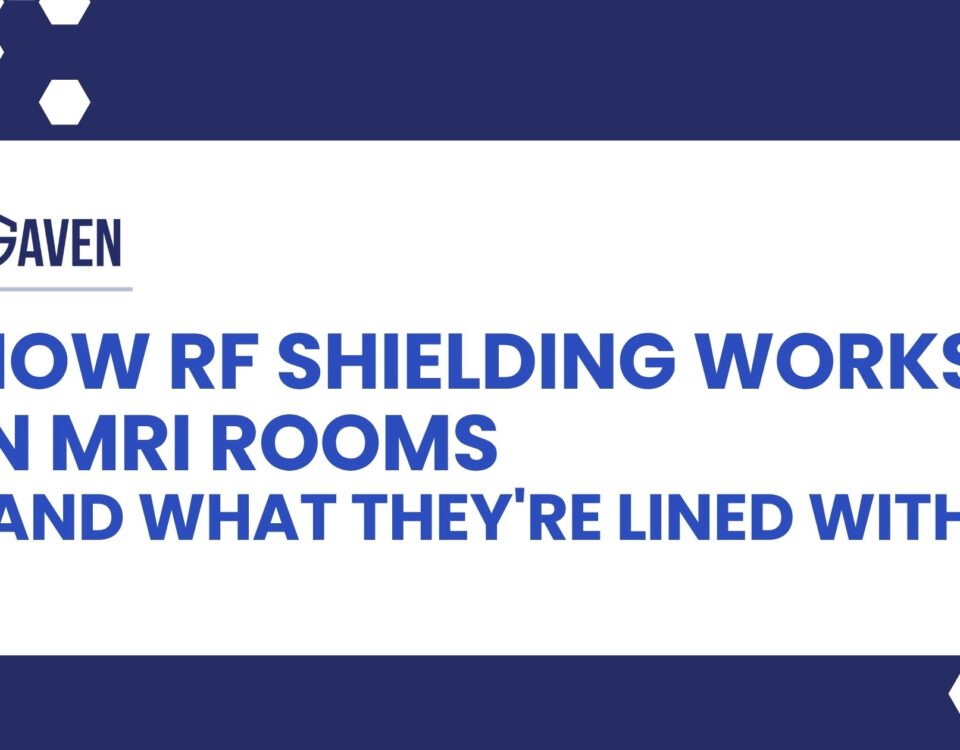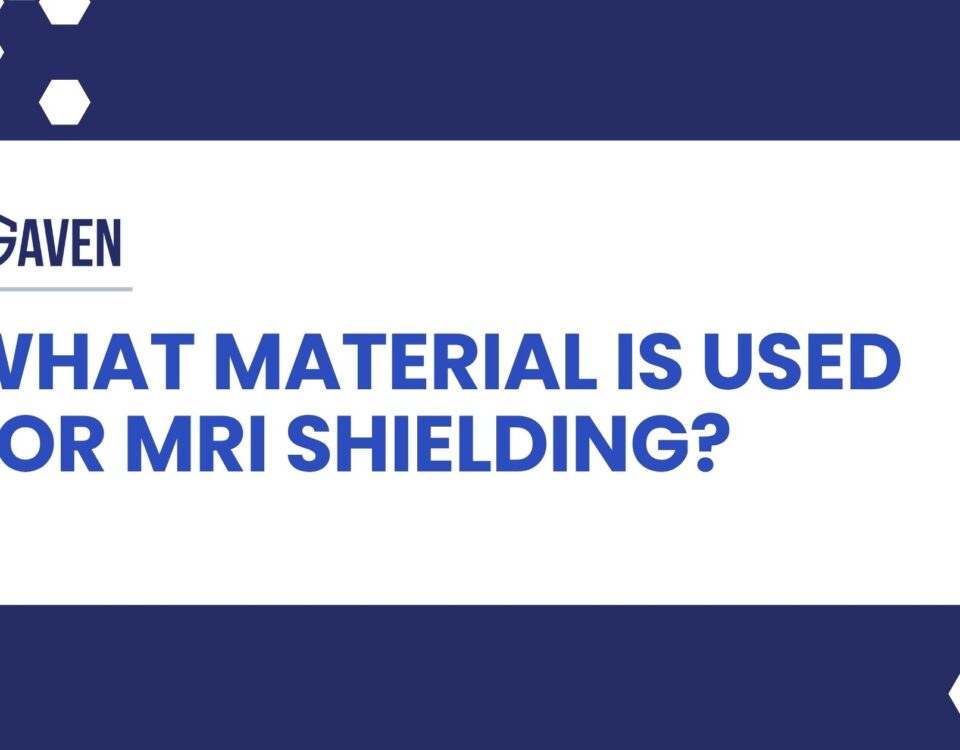


What Is Active Shielding in MRI?
July 8, 2025


What Is the Difference Between Active Shielding and Passive Shielding in MRI?
July 8, 2025Passive shielding is a foundational component of MRI suite design—and one of the most misunderstood. While most people think of the MRI magnet as self-contained, the reality is that magnetic fields don’t stop at the scanner. They extend beyond the room, often in unpredictable ways, and can interfere with nearby equipment or even violate building safety codes if not properly contained.
This article answers the essential question: what is passive shielding in MRI, and how does it work? We’ll explore its function, materials, and when it’s required—especially in environments with strict spatial or regulatory constraints where unshielded fringe fields can compromise both safety and clinical integrity.
For a complete overview of MRI shielding strategies, visit our MRI Shielding page. You can also read our related guide on Active and passive shielding in MRI to understand how different techniques work together in clinical environments.
What is the purpose of shielding in an MRI suite?
MRI systems generate extremely strong static magnetic fields that extend well beyond the scanner bore. Without shielding, these fringe fields can:
- Disrupt sensitive medical or research electronics in adjacent rooms
- Interfere with wireless signals, lab instruments, or HVAC systems
- Create dangerous conditions where ferromagnetic objects could become projectiles
Beyond safety concerns, uncontained fields can degrade imaging quality and place facilities out of compliance with regulations like the 5 Gauss line—a threshold defined by the FDA and ACR to prevent hazardous magnetic exposure to staff, patients, and equipment.
In high-traffic facilities, this shielding is not optional—it’s mission-critical. As John J. Gaviglia, Founder of Gaven Industries, puts it:
“MRI shielding is a safety system. When we talk about magnetic fields, we’re not just managing interference—we’re engineering containment around a clinical tool that can impact human safety and diagnostic outcomes if not properly controlled.”
MRI shielding strategies are therefore critical not just for safety, but for clinical performance and regulatory compliance. Whether integrated into the scanner itself (active) or built into the architecture (passive), shielding enables MRI systems to function without unintended consequences to their environment.

What is active and passive shielding in MRI?
There are two main types of shielding used in MRI environments:
- Active shielding: Uses built-in electromagnetic coils inside the MRI magnet. These coils generate a secondary field to cancel out the primary magnet’s fringe field, reducing its external footprint. This type of shielding is fixed at the time of manufacture and cannot be altered post-installation.
- Passive shielding: Uses physical structural materials—such as steel or mu-metal—installed in the walls, floor, or ceiling of the MRI suite to absorb and redirect stray magnetic fields.
Together, they create a layered approach to safety and spatial control. Active shielding helps reduce the overall footprint of the scanner’s fringe field, while passive shielding is tailored to site-specific architectural constraints and field behaviors.
In retrofit or constrained settings—urban hospitals, legacy facilities, or multi-modal imaging environments—what is passive shielding often becomes a central design consideration from the earliest stages of planning.
What is passive shielding in MRI?
Passive shielding in MRI refers to the use of ferromagnetic materials installed around the MRI suite to contain the magnetic fringe field—the area where the magnet’s influence extends beyond its immediate housing.
This type of shielding is engineered to:
- Absorb or redirect magnetic flux, preventing interference with adjacent rooms or floors
- Maintain the 5 Gauss boundary within tightly controlled zones
- Enable installation in locations with limited clearance, such as near surgical suites, NICUs, or data centers
The shield may take the form of wall panels, floor plates, or even ceiling assemblies, depending on the magnet strength, orientation, and room location within the building.
Gaven Industries frequently designs and installs passive shielding systems in:
- Multi-modality imaging suites, where MRI units are adjacent to CT, PET, or interventional radiology
- Academic research centers with overlapping equipment sensitivity
- Dense urban hospitals with shared structural systems and electromagnetic exposure risks
In these cases, passive shielding is often the only way to mitigate magnetic interference that active shielding alone cannot resolve. And because it’s architectural, not electrical, it can be shaped around project constraints without altering magnet design.
What is passive shielding material in MRI?
Selecting the right passive shielding MRI material depends on a combination of magnet strength (1.5T vs. 3T or higher), field geometry, and building layout. Each element is calculated during shielding design simulations, not estimated from a template.
Common materials include:
- Silicon steel – Most widely used due to availability, cost-efficiency, and reliable attenuation
- Mu-metal – A nickel-iron alloy with exceptionally high magnetic permeability, ideal for shielding high-field magnets in compact or sensitive environments
- Laminated composites – Used where high attenuation performance is required in a lighter or thinner material format
These shielding elements are often installed within the floor slab, behind wall finishes, or above ceiling tiles, seamlessly integrated into the MRI suite’s structural envelope. Gaven’s design team uses electromagnetic modeling software to simulate field behavior and generate material specifications that ensure compliance with OEM installation requirements, ANSI guidelines, and 5 Gauss containment zones.
Because MRI passive shielding is site-specific, no two installations are identical. Gaven’s fabrication process ensures that every panel is cut, fitted, and installed according to its unique placement in the shielding envelope. And post-installation testing confirms performance under live field conditions—not just theoretical specs.
Get expert support for MRI shielding solutions
Whether you’re planning new construction or retrofitting an existing suite, passive shielding is a critical component of your MRI room’s safety and performance strategy. It ensures compliance, protects adjacent systems, and allows your magnet to operate at full capacity—without risk of interference, incident, or code violation.
Work with Gaven Industries to design a shielding system tailored to your site. We provide performance-guaranteed passive and active shielding solutions—from field simulation to final installation and post-construction certification.
When shielding failure isn’t an option, Gaven delivers systems that are built to spec, built to last, and built to perform.




